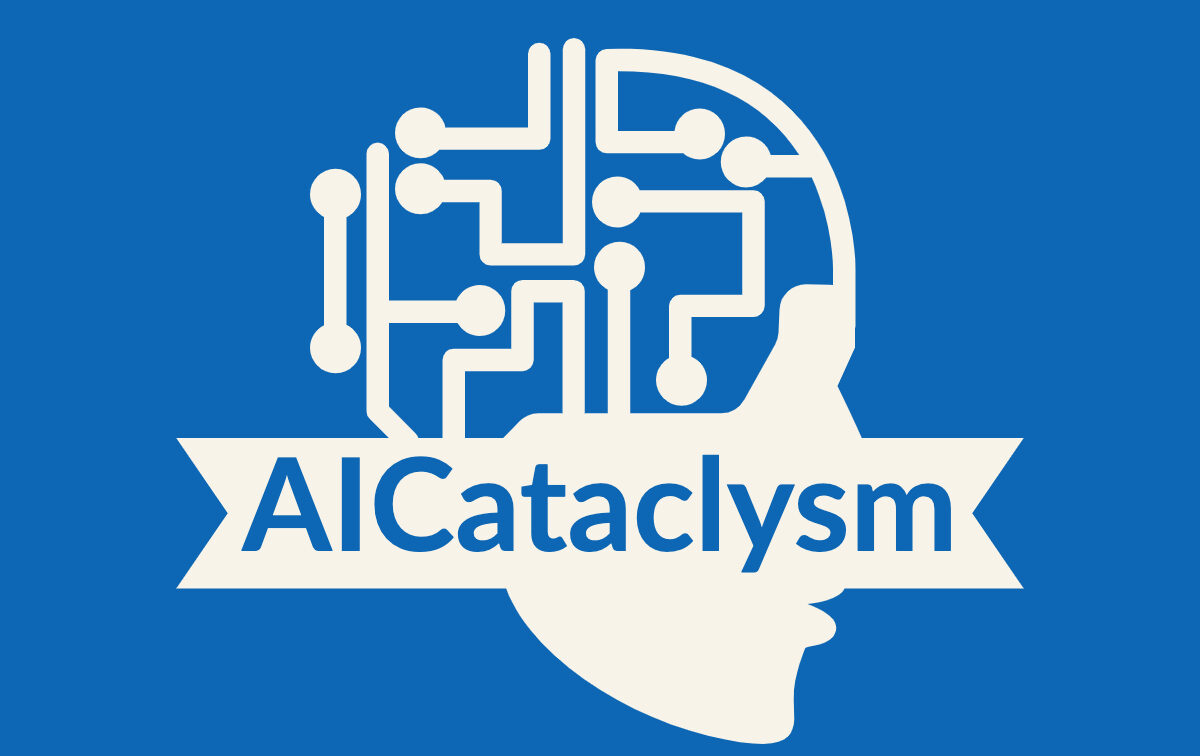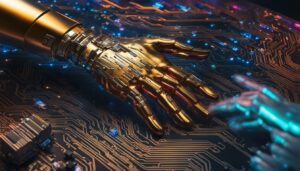I am excited to delve into the intriguing world of weak AI learning capabilities. Can a weak AI learn? This question has been at the forefront of AI research and development. Join me as we uncover the fascinating potential of weak AI and its ability to adapt and grow through machine learning algorithms.
Key Takeaways:
- Weak AI, also known as narrow AI, focuses on specific tasks within a limited domain.
- While weak AI cannot replicate human intelligence, it has the ability to learn and improve through machine learning algorithms.
- Understanding the differences between weak AI and strong AI helps us comprehend the capabilities and limitations of AI systems.
- Weak AI finds applications in various fields such as natural language processing, finance, robotics, video games, healthcare, and transportation.
- The advantages of weak AI include faster decision-making, reduction in human error, and enhanced productivity.
Understanding Weak AI vs. Strong AI
As we delve into the world of artificial intelligence, it’s essential to understand the distinction between weak AI and strong AI. Weak AI, also known as narrow AI, is designed to perform specific tasks within a limited domain. In contrast, strong AI refers to an artificial intelligence system that possesses human-level intelligence and can tackle any problem or task.
“Weak AI is limited to its programmed function, lacking consciousness or awareness,”
While weak AI can learn and improve its performance over time through machine learning algorithms, it remains restricted to its programmed function and lacks adaptability. On the other hand, strong AI has the potential to think, learn, and perform tasks at the level of human intelligence. This fundamental difference sets the stage for a broader exploration of the capabilities and limitations of AI systems.
By comprehending the disparities between weak AI and strong AI, we gain insight into the boundaries and potentials of AI technology. While weak AI excels at specific tasks, it falls short when faced with novel contexts or tasks outside its programmed scope. In contrast, strong AI holds the promise of human-like intelligence and the ability to adapt to new situations, opening up possibilities for solving complex problems and revolutionizing AI technology.
Understanding the dichotomy between weak AI and strong AI is crucial as we navigate the world of artificial intelligence. It enables us to harness the practical applications of weak AI while also pondering the limitless possibilities and ethical considerations presented by strong AI.
Applications of Weak AI
Weak AI has a wide range of applications across different disciplines, showcasing its versatility and usefulness in various industries. Let’s explore some examples of how weak AI is being utilized:
Natural Language Processing (NLP)
Weak AI is used in natural language processing to analyze sentiments and perform language translation. Sentiment analysis helps businesses understand customer opinions and feedback, enabling them to make informed decisions. Language translation allows for effective communication between people who speak different languages, breaking down language barriers in various contexts.
Finance
In the finance industry, weak AI is employed for credit assessment and fraud detection. AI algorithms can quickly analyze large amounts of financial data to assess creditworthiness and identify potential fraudulent transactions. This helps financial institutions make accurate lending decisions and mitigate the risk of fraud, ultimately improving overall financial security.
Robotics
Weak AI plays a significant role in robotics, guiding motion and object recognition. Through machine learning algorithms, robots can learn to recognize and navigate their surroundings, making them more efficient and capable of performing tasks. This application has various implications, from industrial automation to healthcare assistance, improving productivity and enhancing human-machine collaboration.
| Discipline | Examples of Weak AI Applications |
|---|---|
| Video Games | Character design, personalized gaming experiences |
| Image and Video Processing | Object detection, facial recognition |
| Healthcare | Disease diagnosis, personalized therapy planning |
| Transportation | Route optimization, traffic efficiency |
These are just a few examples of how weak AI is being utilized in different industries. From improving customer experiences to enhancing productivity and efficiency, weak AI has proven to be a valuable tool in various applications.
Advantages of Weak AI
Weak AI offers several significant advantages in practical applications. One of the key benefits is its ability to make faster and more accurate decisions compared to humans. With its powerful computational capabilities, weak AI can process large amounts of data and rapidly identify patterns, enabling it to provide informed insights, predictions, and recommendations. This enhanced decision-making speed can greatly improve efficiency and productivity in various industries, from finance and healthcare to transportation and beyond.
Furthermore, weak AI reduces the risk of human error. Unlike humans, AI systems can perform tasks with precision and consistency, minimizing the likelihood of mistakes that may arise from fatigue, distraction, or other limitations. By automating repetitive tasks, weak AI not only increases accuracy but also frees up valuable human resources for more complex and creative endeavors. This reduction in human error can have a profound impact on areas where precision is critical, such as medical diagnoses or financial transactions.

Automation is another advantage offered by weak AI. With AI systems available 24/7, organizations can achieve round-the-clock operations without the need for human intervention. This continuous availability ensures that tasks are performed promptly and consistently, leading to improved productivity and customer satisfaction. By relieving humans of mundane and repetitive tasks, weak AI allows them to focus on higher-value activities, such as problem-solving, innovation, and building stronger relationships with customers.
Real-world Applications of Weak AI
The advantages of weak AI are exemplified in its various real-world applications. In the field of customer service, chatbots powered by weak AI enable businesses to provide instant assistance and support to their clients, enhancing the overall customer experience. Weak AI is also widely used in the healthcare sector, where it aids in disease diagnosis, treatment planning, and personalized care delivery. In the finance industry, weak AI algorithms analyze vast amounts of data to identify patterns of fraud and assess creditworthiness, facilitating swift and accurate decision-making.
Table: Examples of Weak AI Applications
| Industry | Weak AI Application |
|---|---|
| Customer Service | Chatbots for instant assistance and support |
| Healthcare | Disease diagnosis and personalized care delivery |
| Finance | Fraud detection and credit assessment |
| Transportation | Optimizing routes and traffic efficiency |
| Manufacturing | Quality control and predictive maintenance |
The wide range of applications demonstrates the versatility and usefulness of weak AI across different disciplines. As the field of AI continues to evolve, further advancements in weak AI technologies will undoubtedly unlock even greater potential, providing innovative solutions to complex challenges and driving progress in various industries.
Limitations of Weak AI
While weak AI has proven to be valuable in various applications, it does have its limitations. One of the main limitations of weak AI is that it is restricted to specific tasks within its programmed function. Unlike strong AI, which possesses human-like intelligence and can adapt to new contexts or tasks, weak AI is designed to excel in a specific area and cannot exceed its limitations.
Another limitation of weak AI is its lack of adaptability. Weak AI relies on human intervention to set parameters and provide training data, which restricts its capabilities to predefined functions. It cannot independently learn or adapt to new situations, making it less flexible compared to strong AI systems that can learn and evolve on their own.
Despite these limitations, weak AI continues to be a valuable tool in many domains. It excels in tasks that require specialized knowledge and expertise, providing accurate and efficient results. By understanding the limitations of weak AI, we can better appreciate its role and identify areas where stronger AI systems may be necessary.
| Limitations of Weak AI | Description |
|---|---|
| Restricted to specific tasks | Weak AI is programmed to perform well within a specific area of expertise but cannot exceed its limitations. |
| Lack of adaptability | Weak AI relies on human intervention to set parameters and lacks the ability to independently learn or adapt to new situations. |
Overall, while weak AI has its limitations, it remains a valuable tool in various domains. Its ability to excel in specific tasks and provide accurate results makes it a practical choice for many applications. By leveraging the strengths of both weak AI and strong AI, we can continue to advance the field of artificial intelligence and explore new possibilities.
The Potential of Strong AI
Strong AI, also known as artificial general intelligence (AGI), holds immense potential for revolutionizing the field of artificial intelligence. While still in its early stages of development, advancements in technologies like nanotechnology and artificial neural networks are paving the way for creating AI systems that can think, learn, and solve problems at a human level.
With strong AI, the boundaries of what artificial intelligence can achieve expand significantly. Unlike weak AI, which is limited to specific tasks within a predefined domain, strong AI has the ability to perform tasks similar to humans and adapt to new situations. This opens up possibilities for understanding human-like intelligence and pushing the boundaries of AI technology.
“The development of strong AI has the potential to solve complex problems, possess critical thinking and creativity, and comprehend human emotions and thought processes,” says AI researcher Dr. Emily Carter.
Imagine the possibilities of strong AI in various fields. In cybersecurity, strong AI systems could analyze vast amounts of data, detect patterns, and proactively identify potential threats. In robotics, strong AI could enable robots to navigate complex environments and interact more intuitively with humans. In language translation, strong AI could provide more accurate and nuanced translations, bridging language barriers more effectively.
The potential applications of strong AI span a wide range of industries, including healthcare, finance, transportation, and more. However, it is essential to approach the development and use of strong AI responsibly and ethically. As advancements in AI continue to unfold, careful consideration must be given to the potential impact on jobs, privacy concerns, and the overall well-being of society.
Advancements in Strong AI
Advancements in strong AI are driven by breakthroughs in technologies such as deep learning, reinforcement learning, and natural language processing. These advances have fueled the development of more sophisticated algorithms and neural networks, enabling AI systems to process and understand complex data more accurately.
The availability of vast amounts of data, coupled with increased computing power, has accelerated the progress of strong AI. Machine learning algorithms can now train on massive datasets, making it possible for AI systems to learn from experience and improve their performance over time.
- Increased computational power
- Improved algorithms
- Enhanced data processing capabilities
As the field of AI continues to evolve, researchers are exploring innovative approaches, such as cognitive architectures and hybrid models, to further enhance the capabilities of strong AI. These advancements hold promise for pushing the boundaries of artificial intelligence and creating systems that can match or even surpass human-level intelligence.
The Future of AI
As we look towards the future, the potential of strong AI is both exciting and promising. It has the power to transform industries, enhance productivity, and truly revolutionize the way we live and work. However, it is crucial to approach the development and use of strong AI with caution, ensuring that it aligns with ethical standards and prioritizes the well-being of humanity.
By striking a balance between the capabilities of weak AI and the potential of strong AI, we can harness the benefits of both to create a future where artificial intelligence complements human intelligence and augments our capabilities. The continuous exploration and development of AI technologies will shape the future of technology and its impact on society.
Advantages of Strong AI
Strong AI offers a range of advantages that make it a transformative technology with vast potential. One of the key advantages is its ability to make logical decisions based on complex data analysis. Strong AI systems can process large amounts of information quickly and objectively, enabling them to identify patterns and make informed decisions with minimal bias. This capability has significant implications for various industries, including finance, healthcare, and cybersecurity, where accurate decision-making is crucial.
In addition to logical decision-making, strong AI also has the potential to comprehend human emotions. By analyzing facial expressions, tone of voice, and other non-verbal cues, strong AI systems can interpret and respond to human emotions with a high degree of accuracy. This opens up possibilities for applications in areas such as mental health support, customer service, and personalized user experiences.
Another advantage of strong AI is its potential to revolutionize various industries and domains. From advanced medical care and robotics to language translation and image recognition, strong AI can significantly enhance the capabilities and efficiency of existing technologies. Its ability to process vast amounts of data and perform complex tasks with precision and consistency presents opportunities for innovation and improved problem-solving.
Applications of Strong AI
Here are a few examples of the wide-ranging applications of strong AI:
- Cybersecurity: Strong AI can analyze network traffic, detect patterns, and identify potential threats more effectively than traditional security measures.
- Robotics: Strong AI enables robots to perform complex tasks, such as autonomous navigation, object manipulation, and human-like interactions.
- Language Translation: Strong AI systems can accurately translate languages in real-time, facilitating communication across different cultures and languages.
- Image Recognition: Strong AI can identify objects, faces, and emotions in images and videos, enabling applications in fields such as surveillance, marketing, and healthcare diagnostics.
- Advanced Medical Care: Strong AI can assist in disease diagnosis, drug discovery, and personalized treatment planning by analyzing medical data and identifying patterns.
In conclusion, strong AI offers significant advantages in terms of logical decision-making, comprehension of human emotions, and its potential to revolutionize various industries. Its capabilities present opportunities for innovation and improved problem-solving. However, it is important to consider the ethical implications and ensure responsible development and use of strong AI. Striking a balance between weak AI and strong AI is the key to harnessing the potential of AI technology while addressing the limitations and challenges it presents.
Limitations of Strong AI
While strong AI holds promise for revolutionizing AI technology, it also presents several limitations and challenges that need to be addressed. These limitations include the high cost of development, potential job displacement, and ethical concerns.
Cost of Development: Strong AI requires significant financial and technical resources for development. The complexity of creating a powerful AI system that can match or surpass human-level intelligence demands extensive research, advanced computing infrastructure, and skilled expertise. This substantial investment can be a barrier for many organizations and researchers looking to explore the potential of strong AI.
Potential Job Displacement: As strong AI systems become more advanced, there is a concern that they could replace human workers in various industries. Strong AI’s ability to perform tasks faster, with precision, and without fatigue raises questions about the future of employment. While some argue that the implementation of AI can create new opportunities and higher-skilled jobs, others express concerns about the potential displacement of human workers.
Ethical Concerns: With the increasing capabilities of strong AI, ethical considerations come to the forefront. Questions about bias in AI decision-making, privacy and data security, and the potential for misuse of AI technology need to be addressed. The responsible development and use of strong AI systems are essential to mitigate these ethical concerns and ensure that AI benefits society as a whole.
| Limitations of Strong AI | Description |
|---|---|
| Cost of Development | Requires significant financial and technical resources |
| Potential Job Displacement | Raises concerns about the future of employment |
| Ethical Concerns | Includes issues of bias, privacy, and responsible use |
Addressing these limitations is crucial for the responsible and sustainable advancement of strong AI. Continued research, investment, and collaboration across academia, industry, and policymakers can help mitigate these challenges and ensure that strong AI technology benefits society while minimizing potential negative impacts.
The Future of AI: Balancing Weak and Strong AI
As we continue to explore the capabilities of artificial intelligence, one thing becomes clear: the future of AI lies in balancing the strengths of weak AI and the potential of strong AI. Weak AI, with its narrow focus and ability to learn and improve over time, has already demonstrated its practical applications across various domains. From natural language processing to finance and healthcare, weak AI has proven its usefulness in tasks that require specific expertise.
On the other hand, strong AI holds tremendous promise for revolutionizing AI technology. With the potential to exhibit human-level intelligence and problem-solving skills, strong AI could mark a significant milestone in the advancement of artificial intelligence. Recent advancements in technologies like nanotechnology and artificial neural networks offer glimpses of what strong AI could achieve in the future.
However, as we delve deeper into the realm of AI, it is crucial to consider the ethical implications and ensure responsible AI development and use. The advancements in AI technology must be accompanied by safeguards to address concerns such as bias, privacy, and potential job displacement. Striking the right balance between the capabilities of weak AI and the potential of strong AI will require continuous exploration, research, and thoughtful decision-making.
The future of AI holds immense possibilities, but it is up to us to shape it in a way that benefits society as a whole. By harnessing the strengths of both weak AI and strong AI, we can leverage the practical applications of weak AI while pushing the boundaries of AI capabilities with strong AI. Through responsible development and use of AI technology, we can pave the way for a future where AI works in harmony with human intelligence, creating a world that is smarter, more efficient, and more inclusive.






